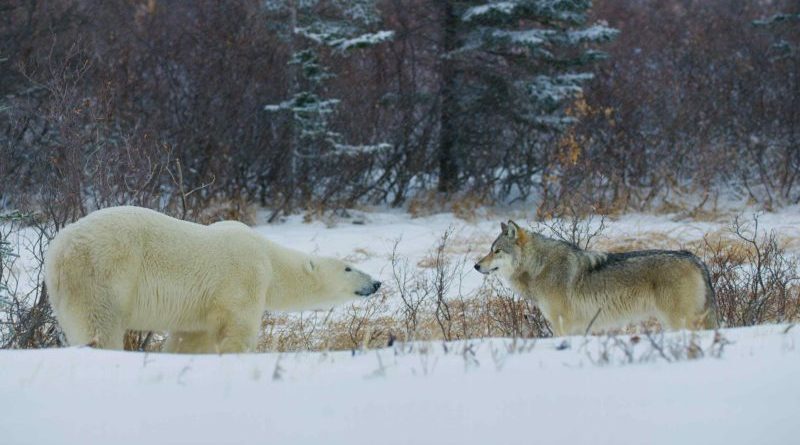INTERVIEW & PHOTOS: Bertie Gregory films amazing encounter between polar bears, wolves
Photo: Polar bears and wolves sometimes end up in encounters on the western reaches of Hudson Bay, Canada. Photo courtesy of National Geographic / Provided with permission.
Bertie Gregory, host of National Geographic’s digital series wild_life With Bertie Gregory, loves to find animal stories from the remotest reaches of the world and bring images and videos back to audience members. He has found much success in his field, and now he’s ready to up the ante with some unbelievable footage involving polar bears and wolves.
On the new season of wild_life, Gregory and his team head out to the waters of Hudson Bay to find Arctic species that brave the cold temperatures to survive. What Gregory found was surprising: animals that were well-adapted to the surroundings and yet still facing perilous circumstances, some tied to global warming.
“The thing about the Arctic, we’ve really tried to go to a place that is on the face of it totally barren and empty and incredibly hostile to humans, but what we are trying to show is that there’s this cast of incredible animals there that don’t just survive there, they thrive there,” Gregory said in a recent phone interview. “They’re actually reasonably comfortable because they’re so well-adapted to the environment. That said, because the Arctic is warming faster than anywhere else on the planet, it’s changing a lot, so we’re looking at a lot of the changes. So lots of animals that are coming together that maybe weren’t coming together before — things like the red fox pushing into the territory of the Arctic fox.”
The bear-wolf encounter that Gregory filmed is considered the “big headliner” for season three of the series. His camera found that the wolves were actually attacking the polar bears, and he and the team filmed two interactions, essentially confirming rumors that he had heard prior to the trip.
“I had heard these rumors of a particular place on the Western Hudson Bay in Manitoba where wolves and bears were in the same habitat,” he said. “So wolves have these huge territories, up to 1,000 square miles on the Western Hudson Bay, and the polar bears during the summer months and the early fall, they are not able to be out on the sea ice hunting because the sea ice melts every summer. So while the bears are waiting for the sea ice to refreeze in the fall, they kind of assemble on the coast, and in this one particular spot, that place that they’re assembling overlaps with the territory of a particularly bold wolf pack.”
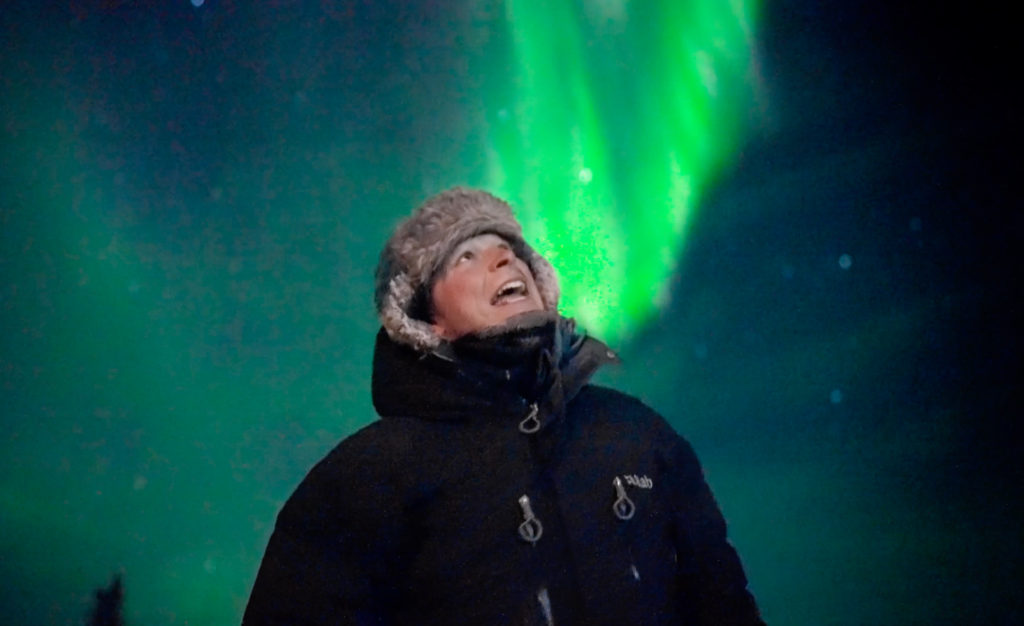
Gregory, at first, didn’t believe the rumors. The encounters between these two keystone species seem too unbelievable, the stuff of legend and lore. However, after he talked to guides and biologists who knew the area, he started to think there was something to be found in the wildness of the upper reaches of Canada.
“It was a bit of a long shot, and I thought, well, we’ve got to go big or go home,” he said. “So let’s go big, and let’s go for it. And we ended up finding that the wolves, they decide when they want to be filmed. Because they have such massive territories, they just disappear for a week at a time. That said, when they were in the area, they’d often come check us out, and so if they were in the area, we’d know they were there because they came and found us. So once they found us, we then followed them for as long as we could, and on two occasions, they bumped into polar bears and had a go at them.”
The timing of these encounters is precise. The sea ice melts in June or July, and it doesn’t refreeze until the start of November. During this in-between period is when the bears are by the coast, so Gregory figured October and early November were the optimal months for a cinematographer to be on the scene.
“We wanted to film this behavior in the snow because I felt that’s the most Arctic-looking scene you can think of, polar bears in the snow,” he said. “That’s when we went for it, and that’s also when the bears are starting to get more active. They’re getting apprehensive waiting for the sea ice to refreeze, so they’re spending a lot of time right at the water’s edge.”
To find the bears, Gregory employed the help of a local outfitter who had a remote lodge. The filmmaking team resided in adjoining cabins, and they also chartered a single-engine Otter plane to travel from nearby Churchill, a town in Hudson Bay.
“It’s in the middle of nowhere,” Gregory said of the lodge. “There’s no other people there, other than this one little setup. … I think, on the face of it, it seems like this really barren, empty, hostile place, and that means that it’s not like filming in the Amazon rainforest or somewhere where there’s an abundance of life, where everywhere you look there’s life. You really have to search for it, and that’s why I think it makes it extra special when you do find these animals. You suddenly get this window into this secret life. If it was easy to find them and film them, they would have been filmed loads.”
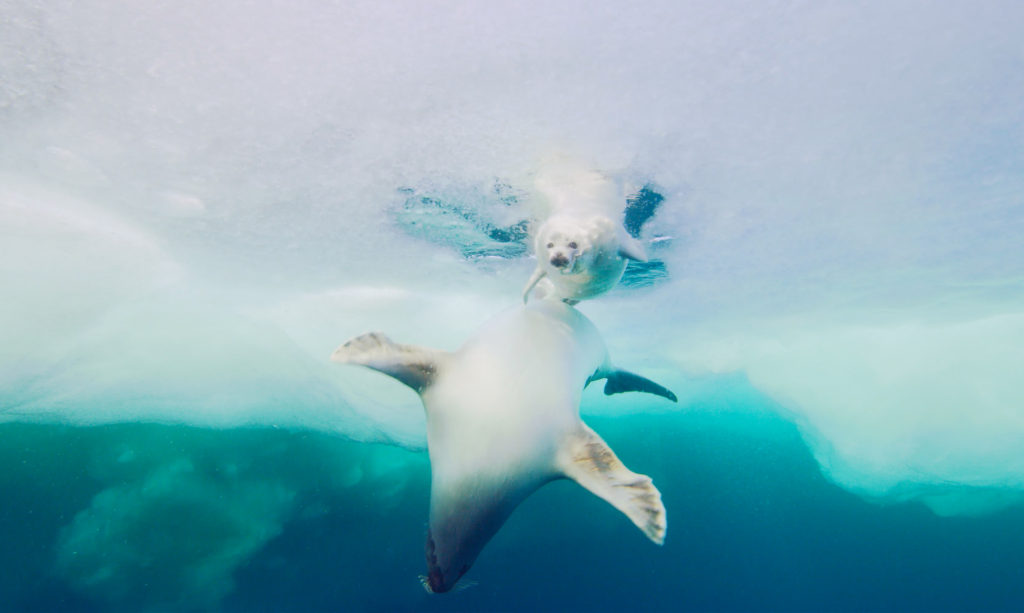
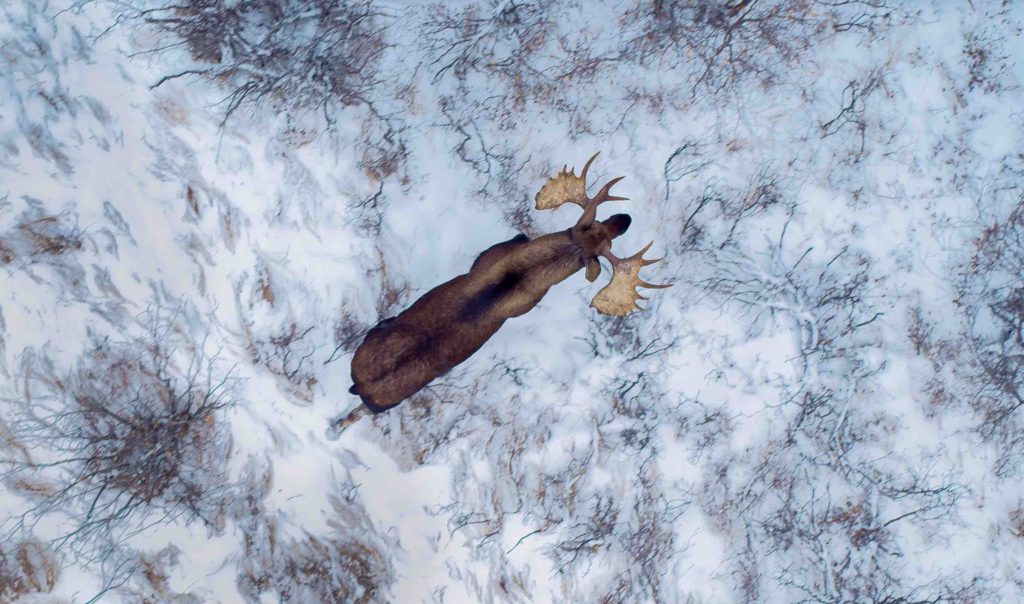
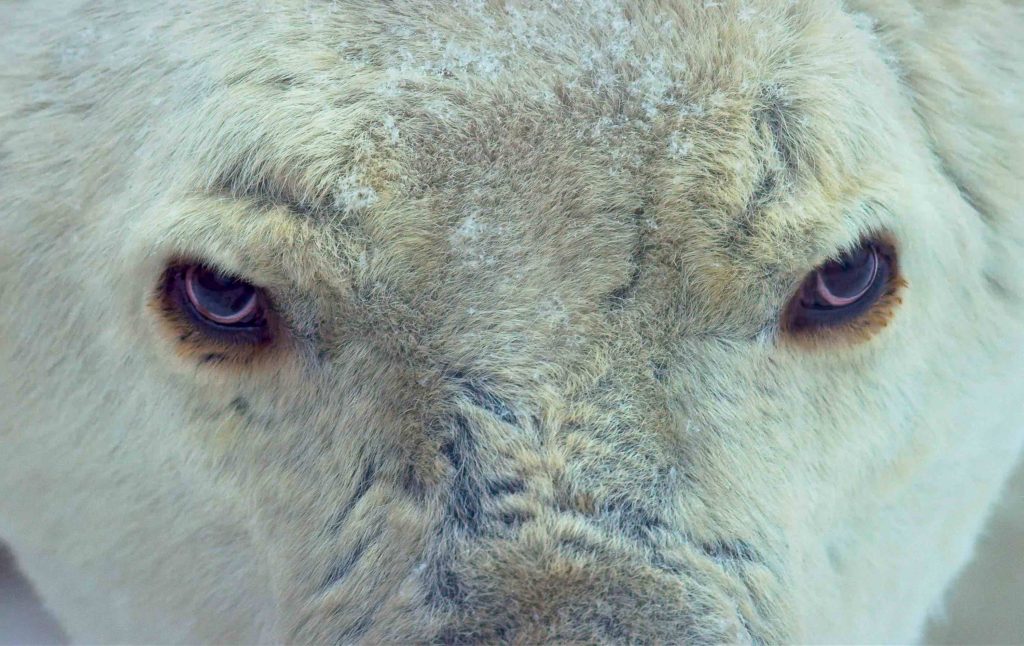
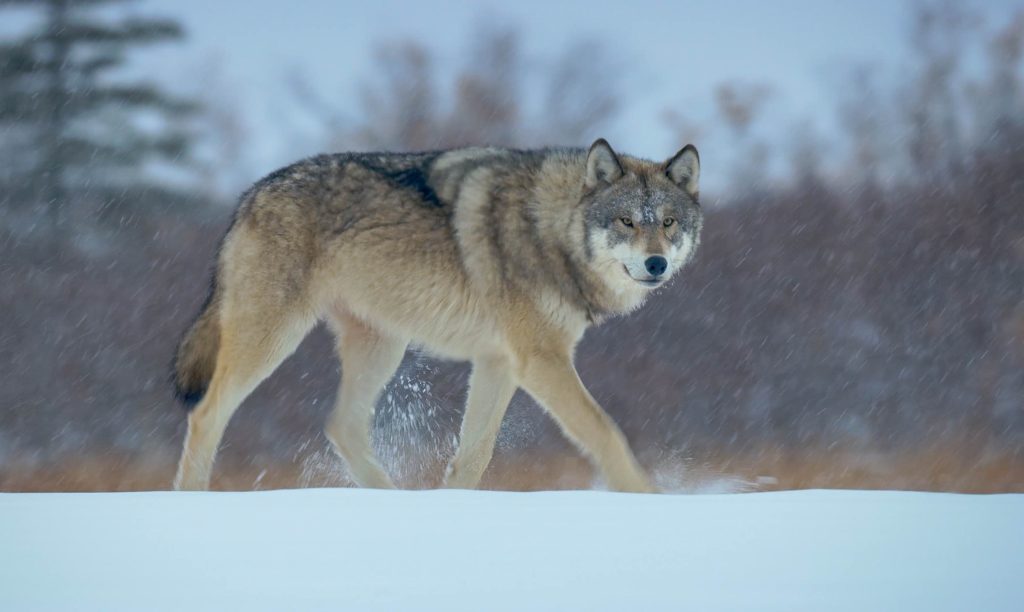
Photos courtesy of National Geographic / Provided with permission.
Gregory, offering a sneak peek into the life of a wildlife cinematographer, said it’s difficult to find an animal scene that is new and fresh in Africa because so many documentary crews have scoped out the continent and its animal hotspots. The cold environments of planet Earth, on the other hand, offer special gifts to the most intrepid of travelers.
“Somewhere that’s incredibly cold, you’ve got all kinds of gear and battery issues,” he said. “But I think there’s a lot more opportunity to get something new and fresh, and to think the wolves are taking on these polar bears is pretty mind-blowing. And so the opportunity to film that for the first time was incredibly exciting.”
wild_life is now in its third season, and when Gregory started this digital series a few years ago, he was only 20 years old. He didn’t have many expectations on how the project would turn out, but he knew that as his first foray as a solo host, he needed to be compelling and find interesting storylines in the wild.
“I never really thought ahead as to what it might be because I was just so concentrated on not screwing up the first season because even the legends at National Geographic, they’ve been shooting stories for 20-25 years, they always say, ‘You’re only as good as your last story,’” Gregory said with a laugh. “This was my first, so, yeah, you screw up your first story, you’re done. I can’t say I was looking ahead too much.”
He added: “My goal with this National Geographic series is, although it’s behind the scenes and presenter-led, unlike something like Planet Earth, I want the natural history, the wildlife footage in it to match up, to be of the standards of Planet Earth. That’s really my goal. I have to ask myself, if I was removed from this series, and it was just straight blue-chip natural history, wildlife only, could it go in a Planet Earth series? And I think with the latest season, I think that is potentially true, given the way we’ve shot it and also the style we shoot and also the fact that we’ve got new behavior. I think often with presenter-led programs, there isn’t the need to get new behavior, so to be able to get new, exciting animal behavior with this style is exciting.”
Gregory has been fascinated with animals ever since he was a young boy. He calls his love for these creatures an obsession, and it was fostered, of all things, by his family’s love of water sports.
“I spent a lot of my childhood bobbing up and down on a little surfboard off the coast of Cornwall in England, and so when you spend that amount of time outside, particularly around the ocean, you subconsciously develop a passion for being outdoors and wildlife and wild places,” Gregory said. “Everyone thought I was a bit of a freak in high school because whilst they were interested in more traditional things, like sports and girls, I liked running away and sneaking up on animals and learning to find them. I found that taking pictures of those animals or taking videos of those animals was a great way of firstly explaining where I had been because it was odd what I was doing, but also I realized the excitement that I could elicit in other people by sharing my own passion. And getting other people excited about something you’re excited about is the best.”
By John Soltes / Publisher / John@HollywoodSoapbox.com
wild_life With Bertie Gregory is now releasing episodes for its third season. Click here for more information.

